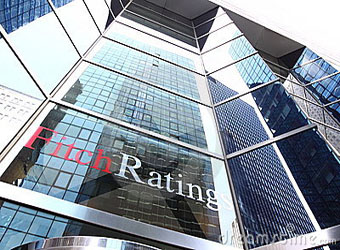Fitch Ratings has affirmed Thursday Egypt’s long-term foreign- and local-currency issuer default ratings (IDRs) at ‘B’ with a stable outlook.
The issue ratings on Egypt’s senior unsecured foreign- and local-currency bonds were also affirmed at ‘B’. The country ceiling and the short-term foreign- and local-currency IDRs were all affirmed at ‘B’.
The rating agency further said Egypt’s ratings balance a large fiscal deficit, a high general government debt/GDP ratio, and recent volatile political history, with renewed progress in implementing an economic and fiscal reform programme and improving external finances.
The subsequent depreciation was the second-largest among Fitch-rated sovereigns in 2016. The pound, which was managed at EGP8.9:USD1 prior to November 3, has averaged EGP17.9:USD1 since, up to 16 June 2017.
The Egyptian government has pressed on with its reform programme, which regained momentum in the second half of 2016, and remains on track with the $12 billion three-year extended fund facility (EFF) signed with the International Monetary Fund in November. In May 2017, the IMF and Egypt completed the first review of the EFF, which should lead to the second disbursement, of $1.25 billion, in June or July.
After the floatation of the Egyptian pound on November 3, the Central Bank of Egypt (CBE) seems not to have intervened in the market and the authorities have been gradually removing a number of capital controls. Fitch said in a statement.
Monetary and fiscal reforms are having a significant macroeconomic impact in Egypt, especially on inflation, Fitch added.
Fitch said it forecasts that inflation will remain above 20 percent for the remainder of 2017 and fall back to an average of 13.5 percent in 2018. CBE is pursuing monetary targeting, which is subject to indicative targets as agreed with the IMF, and has continued to raise its policy interest rates, most recently in May 2017.
The public finances will remain a key weakness of Egypt’s credit profile, Fitch said, yet it expects further gradual fiscal consolidation to start to reduce government debt/GDP in the fiscal year ending June 2018 (FY18). In the first nine months of FY17 the budget sector deficit narrowed to 8 percent of GDP from 9.4 percent in the year-earlier period. The primary deficit more than halved to 1.2 percent of GDP.
The IMF has commended the draft FY18 budget, which is targeting a budget sector deficit of 9 percent of GDP and a primary surplus of 0.3 percent of GDP. Budget sector primary deficits have averaged 3.6 percent in FY11 to FY17, so to reach a surplus would be a significant achievement. Fitch forecasts the budget sector primary balance will get close to balance, at -0.3 percent of GDP. VAT implementation should improve further in FY18, when it will also have a full-year effect and the rate will increase to 14 percent from 13 percent.
“While the government’s budget assumptions are largely realistic, the projected inflation rate of 15.2 percent is likely to prove too low. FY18 inflation may be closer to 20 percent. In this context, there may be pressure to boost some expenditure items, to mitigate the risk of greater social tensions.”
“This could lead to a larger-than-projected budget deficit. There is also uncertainty over the timing and extent of further energy price reforms, which have yet to be publicly announced.”
Fitch also forecasts that general government debt/GDP will rise above 100 percent by end-FY17, owing to significant additions of external debt and the weaker exchange rate. This debt stock creates a large burden of interest payments for the government, more than 40 percent of government revenue.
The rating agency forecasts that government debt/GDP will moderate to 93 percent in FY18 and 87.9 percent in FY19, assuming faster real GDP growth, averaging 5 percent, declining but still high inflation, and a small primary surplus in FY19. The key risk to this outlook is that reform momentum weakens, as it did after a round of reforms in FY15. The level of guaranteed debt and contingent liabilities is currently unclear.
Headline real GDP growth has slowed in FY17, but has proved more resilient than Fitch expected and is likely to be just under 4 percent for the year. Despite fiscal consolidation, Fitch said it forecasts stronger GDP growth in FY18, at 4.5 percent, as the exchange rate adjustment beds in, as gas production starts at the giant Zohr field, and with stronger investment. 


